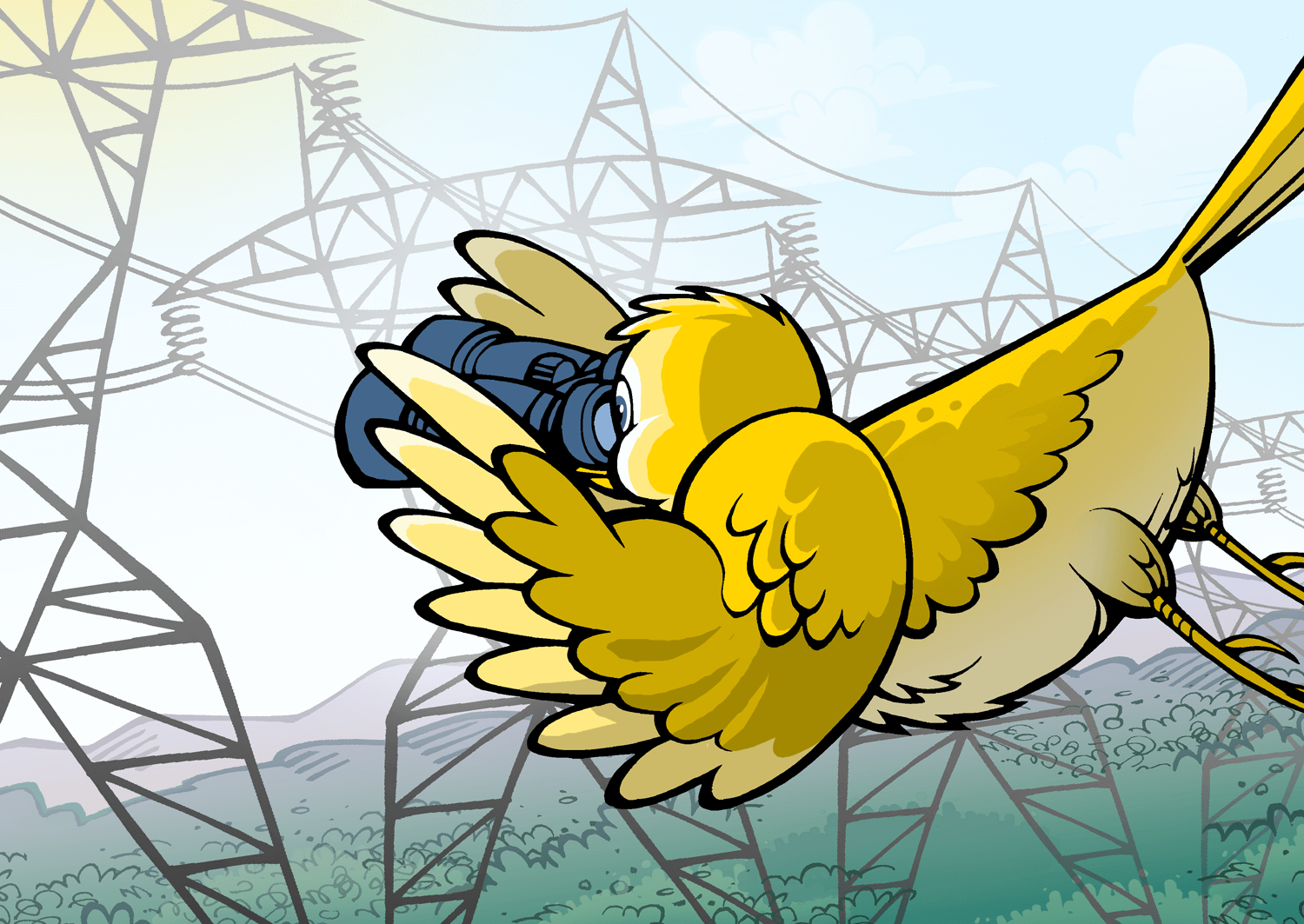Aligning Bird Eyes and Power Lines

Study Aims to Address Knowledge Gap on Bird Vision
An EPRI study recommends ways to use colored markers to prevent bird collisions with power lines, while emphasizing that more research is needed to understand how birds perceive the markers.
Many birds are killed each year as a result of collisions with power lines, and utilities deploy markers on lines to improve visibility. Some markers spin or rock in the wind, and some include lights, luminescent bases, and coatings to enhance visibility. Studies indicate that their effectiveness varies widely, and no research has confirmed or quantified how birds perceive them.
Through a literature review on bird vision, researchers gathered insights on how various spectra of reflected light may affect visibility to birds. They measured light as a function of wavelength reflected and scattered from the surface of 12 commercially available markers, concluding that:
- Contrast between parts of a marker increases its reflectivity.
- Markers with reflective and non-reflective parts may enhance visibility during the day.
- Because motion is an important visual cue to birds, markers that move are recommended.
- Because bird collisions often occur in low light, markers visible in the dark are recommended.
The authors state that these findings are preliminary. More research is needed to quantify basic characteristics of bird visual systems by species and to develop models for predicting how various light spectra affect bird perception. These can potentially help utilities determine which markers are more visible to specific species and select the most appropriate ones.
Artwork by Kirk Anderson

